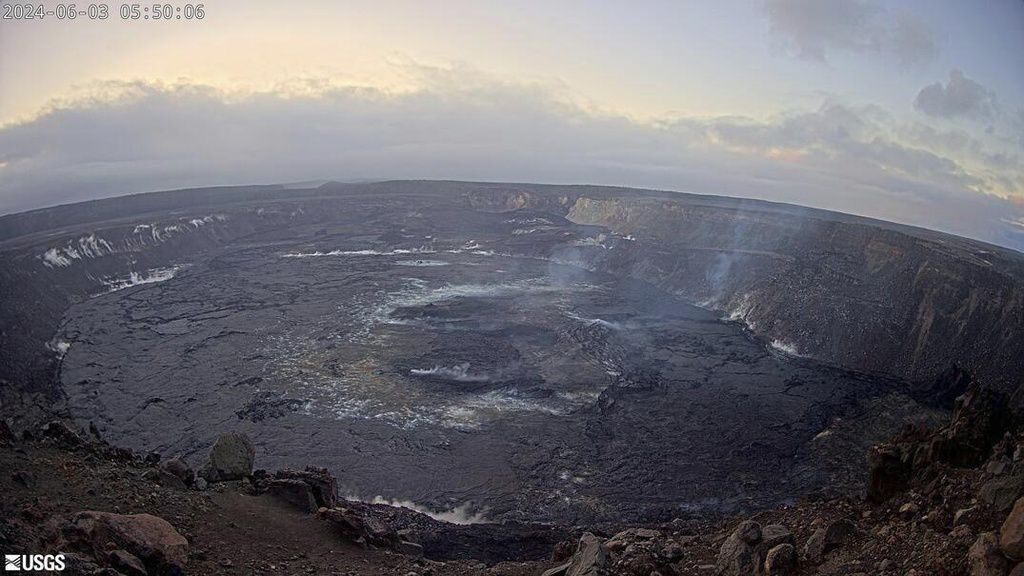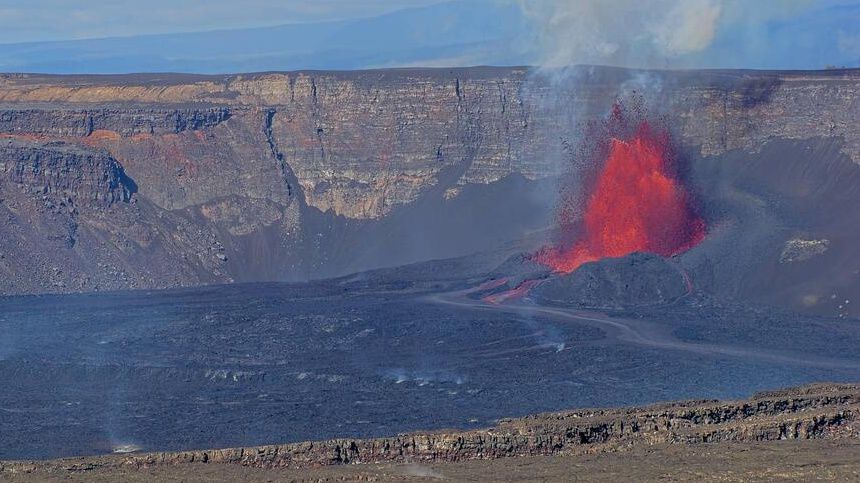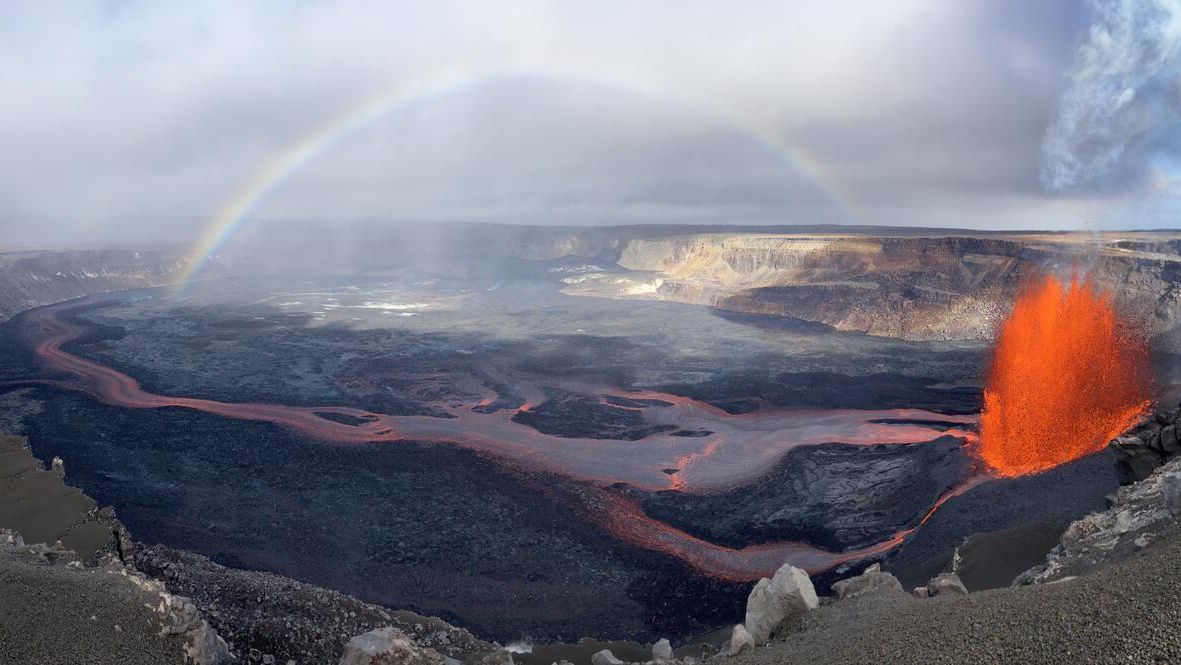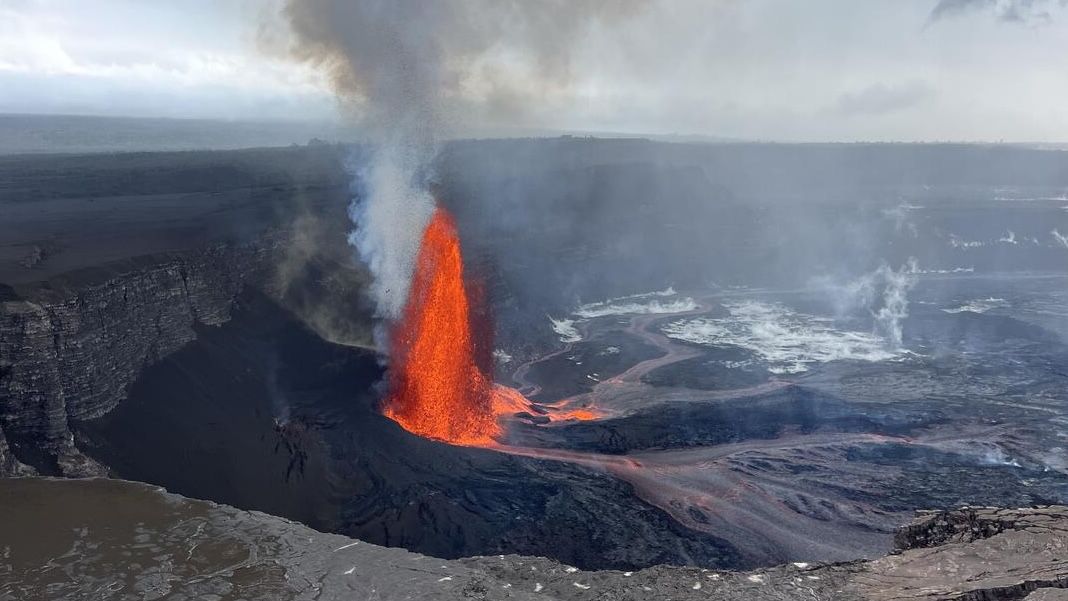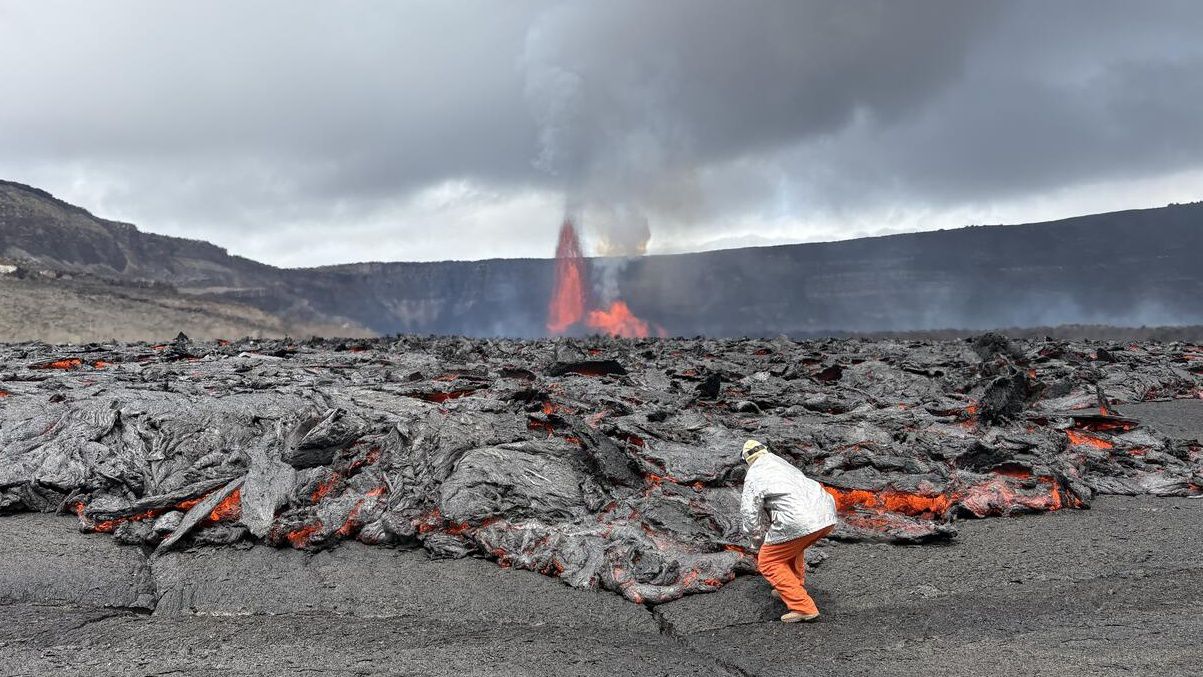HAWAII VOLCANOES NATIONAL PARK, Hawaii — The latest status report, issued at 2:59 p.m. HST by the Hawaiian Volcano Observatory, says the eruption southwest of Kilauea's summit has paused.
However, HVO adds that activity remains dynamic and could change quickly. They will continue to monitor the situation closely.
Scientists report that lava flows were sluggish between 11 a.m. and noon and stopped moving around 12:30 p.m. However, there are still areas of incandescence and elevated volcanic gas emissions.
According to the report, scientists measured a sulfur dioxide emission rate of about 15,000 tonnes per day at 7:45 a.m., which had decreased to 12,000 tonnes per day as of noon. They expect it to decrease further. Volcanic tremors associated with fluid movement continue to be recorded at slightly decreased intensity at summit seismometers.
According to HVO, the early morning eruption has dramatically decreased earthquake activity in the summit area of Kilauea.
Seismicity over the last eight hours has been near Maunaiki, and there has been "slow summit deflation" since 2 a.m., indicating magma may be moving from "summit storage" into the eruption area.
Kilauea volcano is erupting once again.
The Hawaiian Volcano Observatory reported an eruption that began southwest of Kilauea's caldera inside Hawaii Volcanoes National Park that began at approximately 12:30 a.m. HST is ongoing at a low "eruptive volume" and does not pose a threat to surrounding communities because of its remote location.
As a result, HVO is "lowering the Volcano Alert Level for ground-based hazards from WARNING to WATCH and the Aviation Color Code from RED to ORANGE," according to an activity notice issued at 8:37 a.m. Monday.
The primary hazards are airborne related to gas emissions and tephra (all material ejected by a volcanic eruption) being blown downwind of the eruption.
"Accordingly, the USGS Hawaiian Volcano Observatory is raising the Volcano Alert Level for ground-based hazards from WATCH to WARNING and the Aviation Color Code from ORANGE to RED," a notice issued Monday read.
A 4.2 magnitude earthquake was recorded at Kilauea's summit Sunday evening. There was no tsunami threat resulting from that quake.
The observatory continues to monitor Kilauea and will report daily updates. HVO will issue a new Volcanic Activity Notice should the situation change significantly.
Scientists recently shared a video of the changes at the summit caldera of Kilauea since 2018, when it collapsed over three months, lowering by over 1,600 feet. On Dec. 20, 2020, an eruption slowly refilled the caldera.
Four other eruptions have occurred at the summit since then, lasting about a week to more than a year.
Editor’s note: The article has been updated with the report that the eruption has paused. (June 3, 2024)





